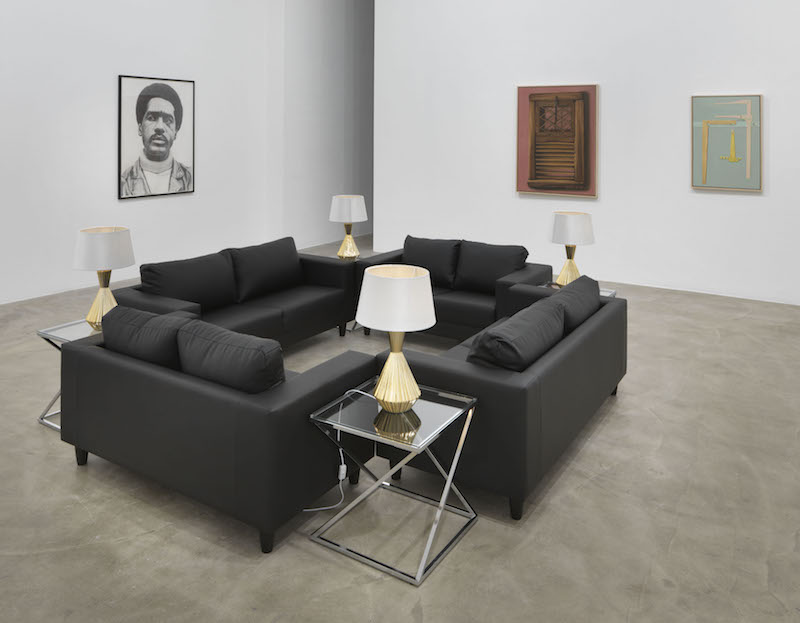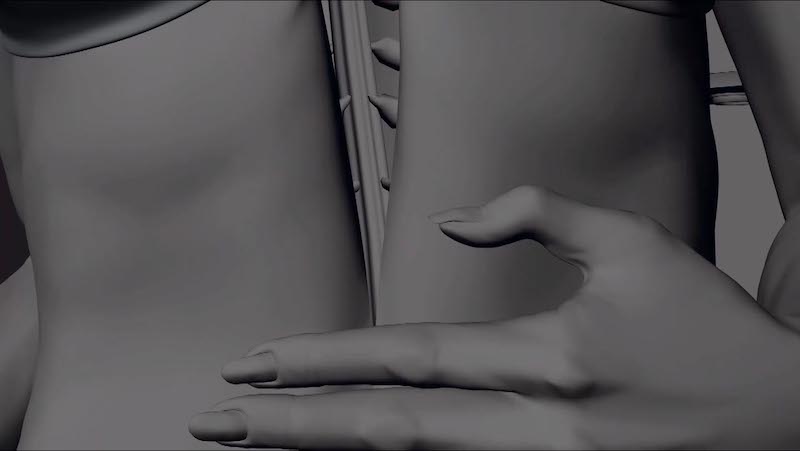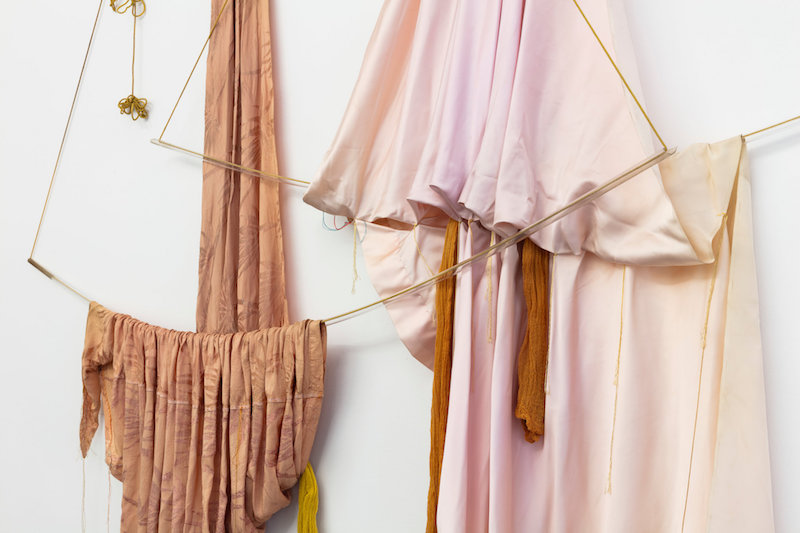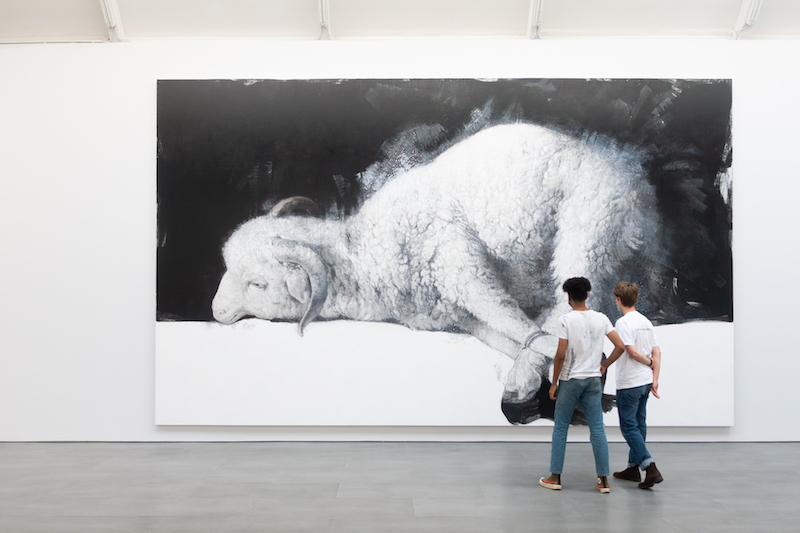Article by William Kherbek // Sept. 18, 2020
The galleries are open. The usual suspects are milling about outside them on the pavements and in the hofs. Berlin Gallery Weekend has arrived in the age of COVID-19 and, at first glance, so many things seem normal(ish), but as we mask up to enter the galleries, the sense of change becomes more palpable. Small crowds, big rooms, it could almost be the ideal circumstances for viewing art, but the unease flares up again when someone attempts to enter or leave and other visitors clear a path to the door. This is art viewing in the “New Normal”, which is anything but normal, as any glance at almost any headline in the day’s newsfeed will attest: ‘Addressing Racial Inequalities in a Pandemic’ (The Lancet). As I was scrolling through Instagram images of the galleries participating in Gallery Weekend, I came across a comment on an unrelated, random post. It was a picture of a reflection of a tree in a shop window: “Is that a window or a mirror?” someone had asked. It is a question that could be asked about contemporary art itself in an age of crisis. Is art at its most powerful when it holds a mirror up to our fractured century and reflects its widening, brutal fissures? Or does art serve its viewers best by offering a window that can open to other possible realities? Inevitably, the best exhibitions offer elements of both aspects.
‘Lost in America’ at Neue Berliner Kunstverein, curated by John Miller, favours the mirror. Upon entering the show, one comes face to face with the author of one of America’s most powerful direct action campaigns in its history. It is a reproduction of John Stuart Curry’s ‘Tragic Prelude’, in which John Brown—“weird John Brown” as he was described in Herman Melville’s poem ‘The Portent’—confronts the viewer bearing perhaps the two most enduring icons of America in his hands, a rifle and a Bible. Behind him are flames, tornadoes and Civil War era soldiers squaring off. Brown’s campaign of murder against slavers throughout the confederacy, as he and his family made their way to a federal arsenal in Harper’s Ferry, Virginia—which they seized and briefly held in the hope of triggering a slave uprising—is, along with Brown’s hanging by the US government, widely understood to have made the Civil War inevitable. The resonance with the present is only too clear (‘Inside the Boogaloo: America’s Extremely Online Extremists’, NY Times). Inside Miller’s exhibition, the viewer finds a collection of works to remind anyone who might need reminding how much of American history haunts every moment of its present. Miller brings together works by giants of American art and rising stars ranging in time late 1960s Dan Graham works to Calla Henkel and Max Pietgoff’s series of cropped images of buildings representing American institutional power from this year. There are grim reminders of the brutality of American racial injustice, as in the works of Carver Audain, particularly the evocative ‘Set-a-Spell US Idiomatic, Countrified’ (2018) and Marisa Williamson’s ‘Cleaning Monticello’—Monticello being the preserved residence of America’s revered third president (and slave-holding psychopath) Thomas Jefferson. What could be a dour exercise of cataloguing America’s inequities offers, in Miller’s able curatorial hands, a surprising amount of levity acknowledging the absurdities that define American life, as in Andrea Fraser’s classic of institutional critique ‘Welcome to the Wadsworth: A Museum Tour’ (1991) and Ken Lum’s ‘Sculpture for Dreamhome’ (1980/2020), consisting of an aspirational set of sofas, lamps and end-tables positioned in a circle. Inviting they may be, but accessible? Well, that’s another story entirely.

‘Lost in America,’ exhibition view Neuer Berliner Kunstverein, 2020, works by Sam Durant, Ken Lum, Caitlin MacBride // © Photo: n.b.k. / Jens Ziehe

Sidsel Meineche Hansen: ‘Seroquel®’, 2014, Videostill // Courtesy Rodeo London / Piraeus
Another group show of considerable weight and depth is ‘Radical Passivity: Politics of the Flesh’ at the nGbk in Kreuzberg. The exhibition is to take place in three “scenes” and the first is currently on display. Taking the writing of Paul B. Preciado as a touchstone to explore ideas of how embodiment and a culture shaped by endless manufactured desire interact and how limits are reached, surpassed and reestablished, the show considers the things done to bodies living and dead. One might not find passivity to be such a radical position, but the withdrawal of cooperation is perhaps the most fundamental form of resistance (‘Extinction Rebellion ‘Go Floppy’ when Arrested Complains Senior Met Officer’, The Guardian), and ‘Radical Passivity’ considers the ways passivity is inculcated, embraced and suffered. It is another exhibition of heavy hitters with perhaps a more European accent than Miller’s show. Included are Alina Szapocznikow, Jutta Koether, Till Gathmann, Paul Thek, Lee Lozano and many others. There are a number of potent dialogues in the exhibition, not least between Lozano and Koether, but also between the nightmarish digital visions of Sidsel Meineche Hansen and Henrik Olesen. ‘Radical Passivity’ is sensitively curated despite its sometimes painful content: the Richard Kern/Lydia Lunch film ‘The Right Side of My Brain’ (1984) still has the power to shock nearly four decades after its creation. The space at the nGbk is used exceptionally well; works with vastly different registers and intentions, from Andrea Winkler’s imposing ‘Untitled (Vests)’ to Sophia Eisenhut and Christian Köbl’s eerily intimate ‘2 Be Inc.’, seem to build off each other rather than clashing. ‘Lost in America’ held up the mirror, ‘Radical Passivity’ is much more about windows, even portals to other truths, even other planes of existence.

Rosemary Mayer: ‘Rods Bent Into Bows – Fabric Sculptures and Drawings 1972-1973,’ 2020, installation view at ChertLüdde, Berlin // Photo by Andrea Rossetti, Courtesy of The Estate of Rosemary Mayer, New York
A number of solo shows also provided highlights this week, including a transporting show of Bridget Riley’s works across the Max Hetzler spaces in Charlottenburg. At ChertLüdde the exhibition ‘Rods Bent Into Bows’ features classic works from the 1970s by Rosemary Mayer. Mayer’s fabric sculptures are entrancing, hanging in strange geometries along the gallery’s walls or looming out into space on their titular bent rods: they are somehow both unassuming and overwhelming. The exhibition also features a number of Mayer’s studies and drawings to provide context for immersing oneself in an intensely fruitful period, in the life of an artist whose influence is strongly but subtly felt today. Incidentally, Mayer’s exhibition makes a nice double feature with a show of Helen Mirra’s fabric works at Galerie Nordenhake, near the other end of Ritterstrasse.
Another exhibition that has stayed with me from Gallery Weekend is carlier | gebauer’s show of Jelena Bulajic work. Bulajic’s canvases are strongly dialogic, infused as they are with art historical references including to Bernini, Wolfgang Tillmans and a massive reimagining of Francisco de Zurbarán’s ‘Agnes Dei’ (1640). These appropriated images in mixed media paintings aren’t always exactly enjoyable to look at, but somehow the works together transcend the sum of their parts, fusing a reflection on the fragility of our present moment and the impulse to document and memorialise it. Standing beside the enlarged eye of Zurbarán’s lamb, rendered in stark black and white (not unlike a newspaper image), one can feel a variety of contemporary isolation that is utterly bone-chilling (‘Animal Rights Activists Uncover Locations of Thousands of Factory Farms’, The Intercept). To glance in the mirror may sometimes be shocking. Often, today, glancing out the window is equally as fraught. Bulajic’s and the other exhibitions demonstrate that art, at its best, is capable of doing both of these things at once. The question is now for the viewer: what should one do with the knowledge and experience these exhibitions impart?

Jelena Bulajic at Carlier | Gebauer, 2020 // Photo by Anna Russ
Exhibition Info
Neuer Berliner Kunstverein
Group Show: ‘Lost in America’
Exhibition: Sept. 10, 2020–Jan. 17, 2021
nbk.org
Chauseestraße 128–129, 10115 Berlin, click here for map
nGbK
Group Show: ‘Radikale Passivität: Politiken des Fleisches’
Exhibition: Sept. 11, 2020–Nov. 01, 2021
ngbk.de
Oranienstraße 25, 10999 Berlin, click here for map
Galerie Nordenhake
Helen Mirra: ‘ĉielarka aktivec’
Exhibition: Sept. 11–Nov. 14, 2020
nordenhake.com
Lindenstraße 34, 10969 Berlin, click here for map
Chertluedde
Rosemary Mayer: ‘Rods Bent Into Bows’
Exhibition: Sept. 4–Oct. 31, 2020
chertluedde.com
Ritterstraße 2a, 10969 Berlin, click here for map
Galerie Max Hetzler
Bridget Riley
Exhibition: Sept. 5–Oct. 24, 2020
maxhetzler.com
Bleibtreustraße 45, 10623 Berlin, click here for map
Carlier|Gebauer
Jelena Bulajic
Exhibition: Sept. 12–Oct. 7, 2020
carliergebauer.com
Markgrafenstraße 67, 10969 Berlin, click here for map




















